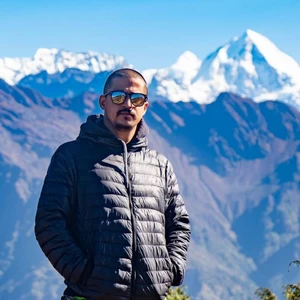Physical Preparation
The first step in preparing for traveling to the base camp of Everest is to build and develop cardiovascular endurance and strength. Some days, you will travel for up to 9 hours, so, endurance is vital. If you are trekking without an agency, your backpack will weigh anywhere from 10 kg to 15 kg, however, if you travel with an agency, they will provide you with a porter. In that case, you will still carry a daypack that will weigh 4-5 kg. There are several ways of increasing your endurance. You can start with aerobic exercise, which includes hiking, jogging, cycling, swimming, interval training, endurance training, cross-training, proper diet, rest and recovery, and more. Consult with a trainer and your doctor before you start a training regimen.
Also essential for the trek is strength training which improves muscle strength that is required for long days of hiking and climbing. To increase strength, you can do weight training exercises like deadlifts, bench presses, squats, and exercises that target the legs and thigh muscles. You can also try free weights, body-weight exercises, and machine-based exercises. Proper nutrition, rest, and recovery are also crucial for strength exercises.
Acclimatization
Acclimatization is another major challenge for the Everest base camp trek that needs to be considered before the trek. This trek will take to you an altitude of over 5500 meters (17,000 feet), where the oxygen level is very low. The atmospheric pressure drops as the altitude increases, and thus, the concentration of oxygen decreases. It happens because there are fewer molecules of oxygen because the atmosphere is not as dense as the sea level.
The reason acclimatization is so necessary is that it helps the body adapt to the low level of oxygen by increasing the production of red blood cells. Even experienced trekkers and guides should go through the acclimatization process. Although most itineraries are designed to minimize the risk of altitude sickness, it can be helpful if you are prepared beforehand.
Acclimatization is best accomplished by progressively increasing the height at which you work out. You can start with hikes to lower altitudes and gradually increase the height. If your work or location doesn’t allow you for a high-altitude trek, you can reach Nepal early and do shorter treks like the Mardi Himal base camp trek, which is a short trek but reaches up to 4500 meters.
Some people also use altitude training masks to prepare for the trek. However, consult your physician about its use.
Also, check, Mount Everest Helicopter Tour from Kathmandu
Mental Preparation
When it comes to training for an Everest Base Camp hike, mental preparation is just as vital as physical preparation. The trip is a difficult adventure that demands a high level of determination and mental endurance. Setting a clear objective and seeing yourself attaining it is one approach to psychologically prepare for the walk. This will boost motivation and determination.
Set yourself reasonable goals and expectations. Recognize the obstacles and challenges you'll face and plan accordingly. Gradually improve your physical fitness. This will assist you in acclimating to the high altitude and lowering your chance of damage. To prepare for the ascent, practice visualization, and mental images. Visualize yourself reaching the peak and the actions you'll need to take to get there.
Make plans for the worst-case situation. Understand the risks and have a strategy in place in case something goes wrong. Seek the assistance of friends, family, and a professional advisor. The assistance will assist you in remaining motivated and focused on your objective. If things don't go as planned, be psychologically prepared to turn around. It is always better to be safe than sorry. Finally, remember to take in the scenery and enjoy the voyage. The opportunity to climb Mount Everest is a once-in-a-lifetime adventure.
Gear and Equipment
It is a good idea to get used to the gear and equipment you’ll be bringing on the trek. Buy your gear a couple of months in advance and try it out during short hikes. The most important thing to try out is hiking boots. The new hiking boots can cause blisters, and can have fitting issues, so, breaking in early is a good idea.
Also, practice using trekking poles, backpacks, thermal base layers, hydration packs, and more. If you have any issues with any gear, you will have plenty of time to return it and buy something more suited to you, if you buy your gear early. There’s nothing more frustrating than having a broken trekking pole or busted shoes during the trek itself.
Diet and Hydration
A balanced food and the right water are necessary to get ready for the trip. A well-balanced supper full of protein and complex carbohydrates can help your body get the fuel it needs for the journey. Additionally, it's important to consume enough water to stay hydrated, especially at altitude. To keep your body relaxed and prepared for the voyage, make sure you get adequate rest and sleep.
In conclusion, getting ready for an Everest Base Camp walk is a tough and worthwhile experience that demands both physical and mental preparation. A balanced diet, plenty of water, and rest are all crucial components of journey preparation, as are increasing cardiovascular endurance and strength, adjusting to high altitude, mentally preparing, being comfortable with the gear and equipment, and taking care of your overall health. Take your time, build up your strength and fitness gradually, and most importantly, have fun.

